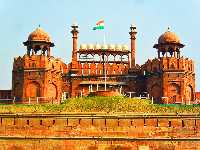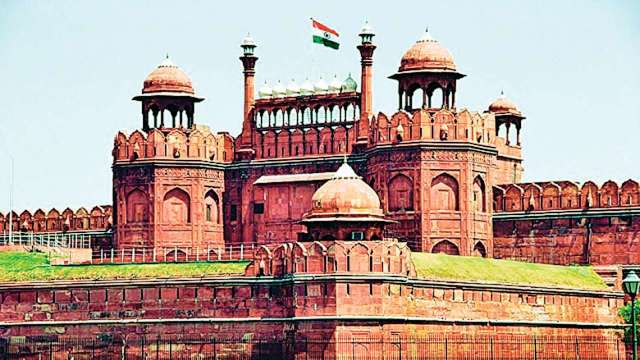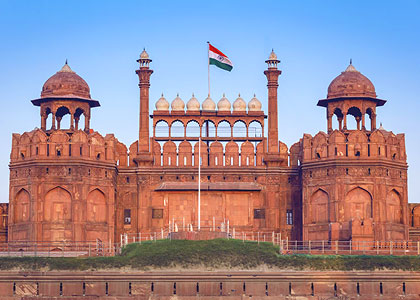The Mughal emperors (or Moghul) built and ruled the Mughal Empire on the Indian subcontinent, mainly corresponding to the modern countries of India, Pakistan, Afghanistan and Bangladesh. The Mughals began to rule parts of India from 1526, and by 1700 ruled most of the sub-continent. After that they declined rapidly, but nominally ruled territories until the 1850s. The Mughals were a branch of the Timurid dynasty of Turco-Mongol origin from Central Asia. Their founder Babur, a Timurid prince from the Fergana Valley (in modern Uzbekistan), was a direct descendant of Timur (generally known in western nations as Tamerlane) and also affiliated with Genghis Khan through Timur's marriage to a Genghisid princess.
Many of the later Mughal emperors had significant Indian Rajput and Persian ancestry through marriage alliances as emperors were born to Rajput and Persian princesses.Akbar, for instance, was half-Persian (his mother was of Persian origin), Jahangir was half-Rajput and quarter-Persian, and Shah Jahan was three-quarters Rajput.
During the reign of Aurangzeb, the empire, as the world's largest economy, worth over 25% of global GDP, controlled nearly all of the Indian subcontinent, extending from Chittagong in the east to Kabul and Baluchistan in the west, Kashmir in the north to the Kaveri River basin in the south.
The Mughal Empire was founded by Babur, a Timurid prince and ruler from Central Asia. Babur was a direct descendant of the Timurid Emperor Tamerlane on his father's side, and the Mongol ruler Genghis Khan on his mother's side. Ousted from his ancestral domains in Turkistan by Sheybani Khan, the 14-year-old Prince Babur turned to India to satisfy his ambitions.He established himself in Kabul and then pushed steadily southward into India from Afghanistan through the Khyber Pass. Babur's forces occupied much of northern India after his victory at Panipat in 1526. The preoccupation with wars and military campaigns, however, did not allow the new emperor to consolidate the gains he had made in India. The instability of the empire became evident under his son, Humayun, who was driven into exile in Persia by rebels.Humayun's exile in Persia established diplomatic ties between the Safavid and Mughal Courts, and led to increasing West Asian cultural influence in the Mughal court. The restoration of Mughal rule began after Humayun's triumphant return from Persia in 1555, but he died from an accident shortly afterwards.Humayun's son, Akbar, succeeded to the throne under a regent, Bairam Khan, who helped consolidate the Mughal Empire in India.
Through warfare and diplomacy, Akbar was able to extend the empire in all directions, and controlled almost the entire Indian subcontinent north of the Godavari river. He created a new ruling elite loyal to him, implemented a modern administration, and encouraged cultural developments. He increased trade with European trading companies.The Indian historian Abraham Eraly wrote that foreigners were often impressed by the fabulous wealth of the Mughal court, but the glittering court hid darker realities, namely that about a quarter of the empire's gross national product was owned by 655 families while the bulk of India's 120 million people lived in appalling poverty.After suffering what appears to have been an epileptic seizure in 1578 while hunting tigers, which he regarded as a religious experience, Akbar grew disenchanted with Islam, and came to embrace a syncretistic mixture of Hinduism and Islam. Akbar allowed freedom of religion at his court, and attempted to resolve socio-political and cultural differences in his empire by establishing a new religion, Din-i-Ilahi, with strong characteristics of a ruler cult.He left his son an internally stable state, which was in the midst of its golden age, but before long signs of political weakness would emerge.
Akbar's son, Jahangir, "was addicted to opium, neglected the affairs of the state, and came under the influence of rival court cliques. During the reign of Jahangir's son, Shah Jahan, the splendour of the Mughal court reached its peak, as exemplified by the Taj Mahal. The cost of maintaining the court, however, began to exceed the revenue coming in.






Post a Comment